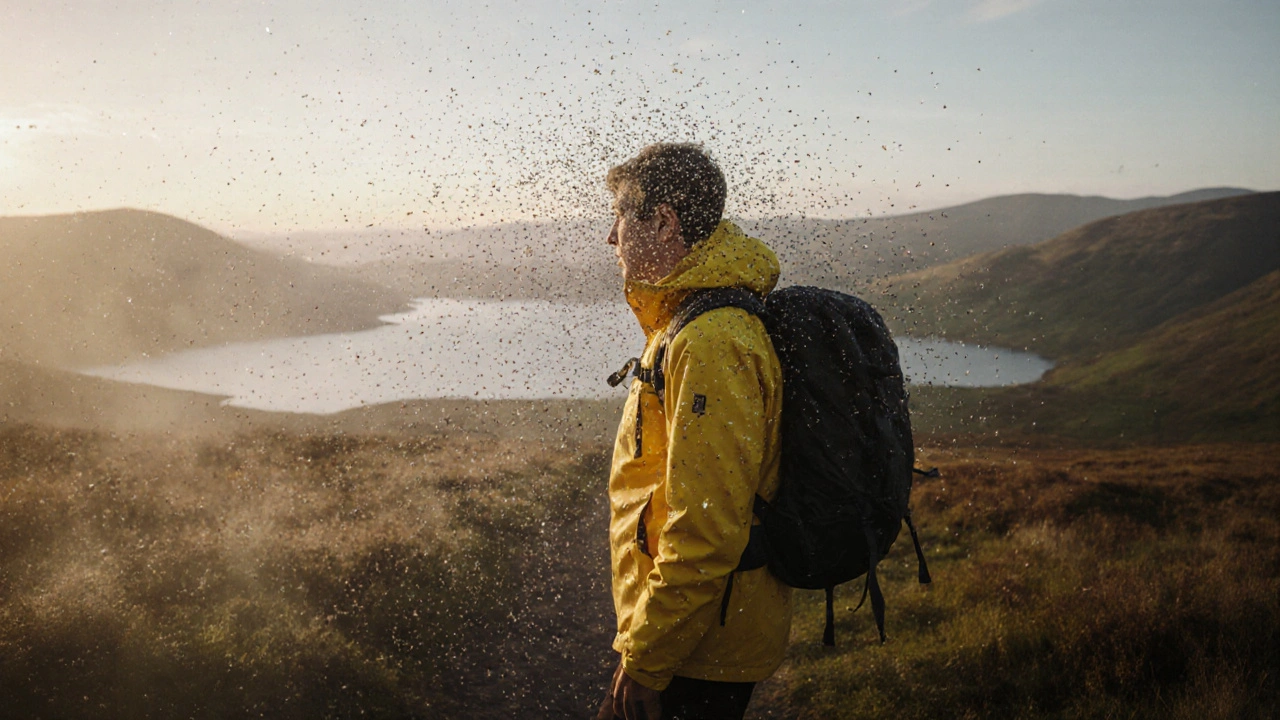Everything You Need to Know About midge bite in Scotland
When dealing with midge bite, a small, red, itchy puncture caused by the bite of a female midge. Also known as tiny Highland nuisance, it often shows up during the warm months when midges swarm the lochs and glens. The midge season, typically from late May through September, sets the stage for most outdoor plans in the Scottish Highlands. Understanding how these three entities interact helps you stay comfortable while exploring the scenery.
The bite itself is more than a cosmetic annoyance; it can cause local swelling, intense itching, and even allergic reactions in sensitive skin. That’s why protective measures are essential. A good strategy combines timing, gear, and simple chemistry. Travelers who schedule hikes early in the morning or later in the evening avoid the peak activity window of midges, which is usually between 10 am and 6 pm. Wearing light-colored, tightly woven clothing—think long sleeves and trousers—creates a physical barrier that midges find harder to penetrate. Adding a repellent with DEET or picaridin forms a chemical shield, further reducing bite incidents.
How to Spot and Treat a Midge Bite Quickly
The moment you feel a tiny prick, you’re likely dealing with a midge bite. It often appears as a tiny raised bump surrounded by a red halo. To soothe the itch, wash the area with mild soap and apply a cold pack; this narrows blood vessels and eases swelling. Over‑the‑counter antihistamines or hydrocortisone cream can cut down the histamine response, preventing the bite from turning into a persistent rash. If you notice spreading redness or flu‑like symptoms, it’s wise to consult a medical professional—especially if you have known sensitivities.
Beyond personal care, the broader travel context matters. Many of Scotland’s top attractions, like the lochs around Glencoe or the forests near Inverness, sit in prime midge habitats. Guides often recommend staying in well‑screened accommodation during peak months to keep the insects out at night. Some tourist sites even provide complimentary anti‑midge nets for tents and cabins. By planning your itinerary around these resources, you can enjoy the iconic scenery without the constant itch.
Finally, remember that the same conditions that bring out midges—high humidity, low wind, and warm temperatures—also create the most stunning landscapes. Embracing a few preventive steps means you won’t miss out on the vivid green hills, sparkling lochs, and historic castles that define the Scottish experience. Below you’ll find a curated list of articles that dive deeper into timing your visit, choosing the right clothing, and mastering bite relief, giving you all the tools you need to make your next adventure bite‑free.

Scotland midges explained: what they are, when they bite & how to avoid them
Caleb Drummond Oct 23 9Discover what midges are, why they bite, where they thrive in Scotland, and practical tips to stay comfortable during the summer outdoors.
More Detail